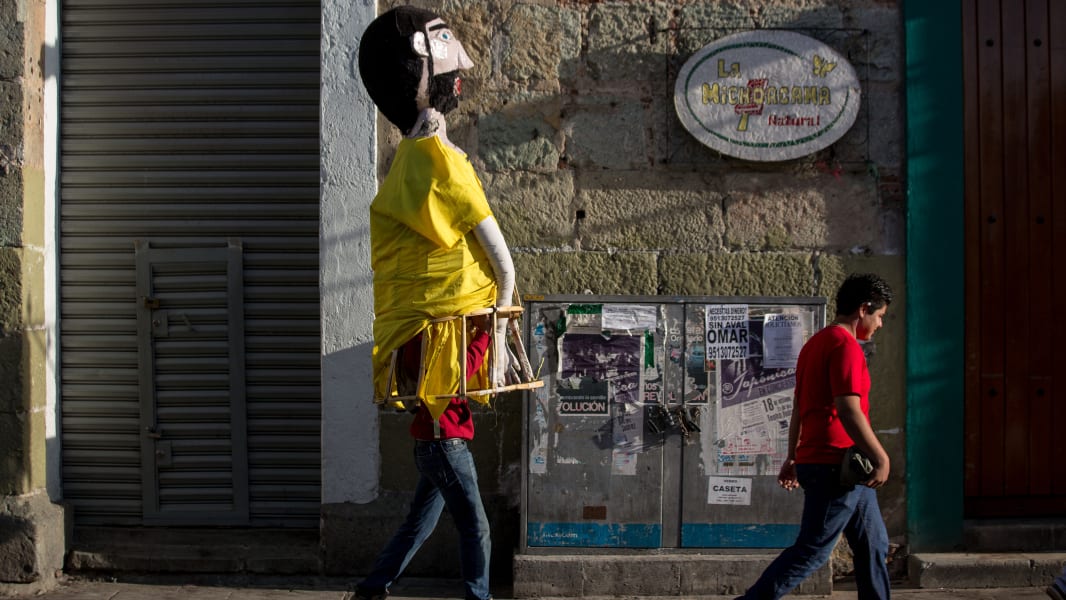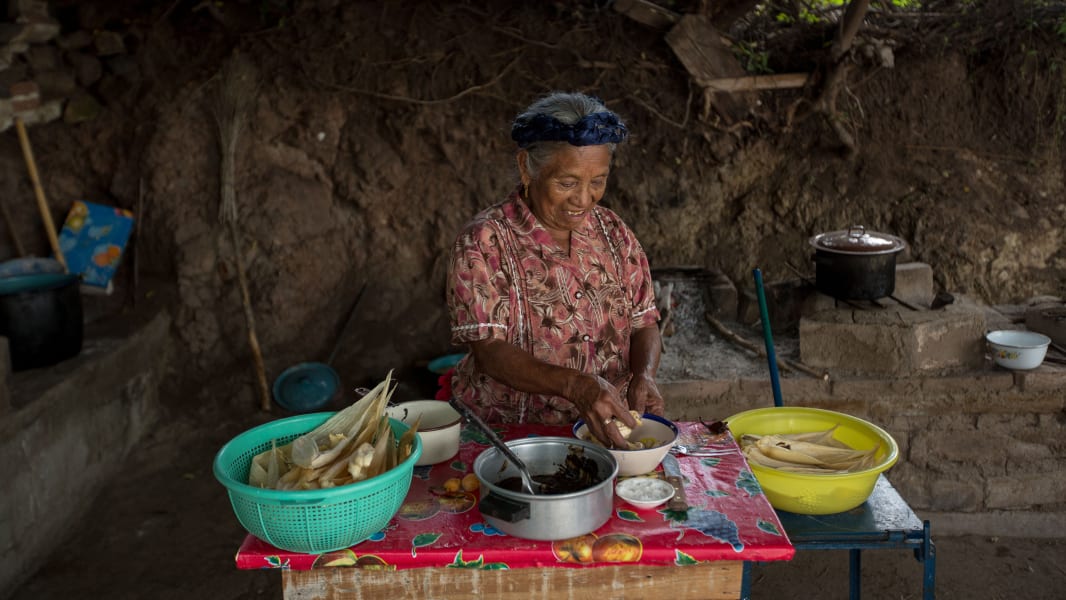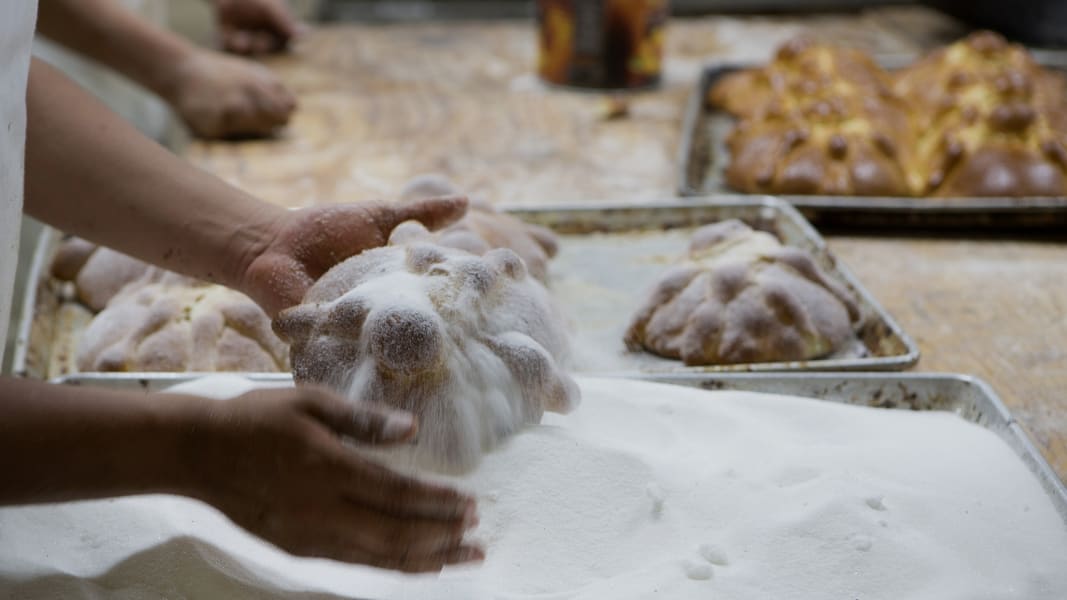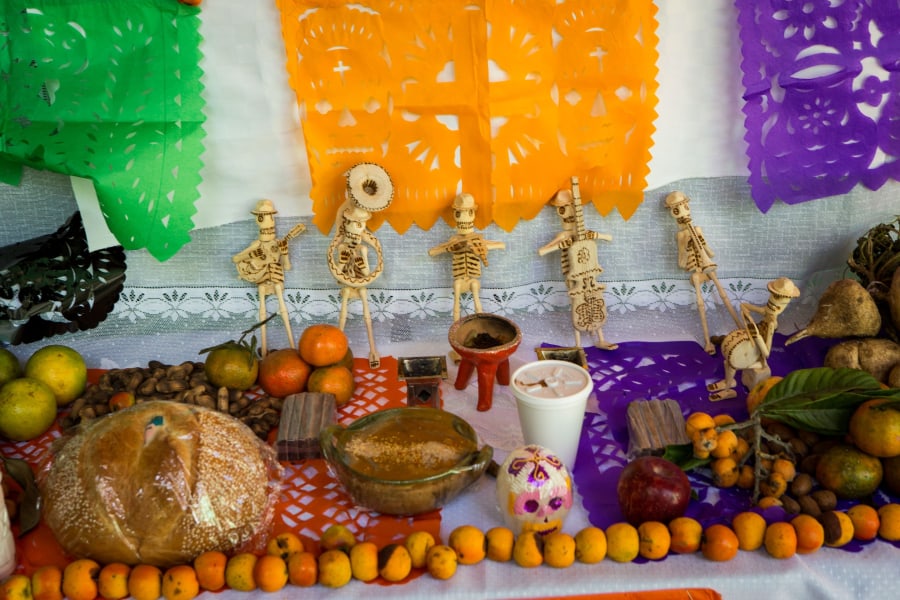Share
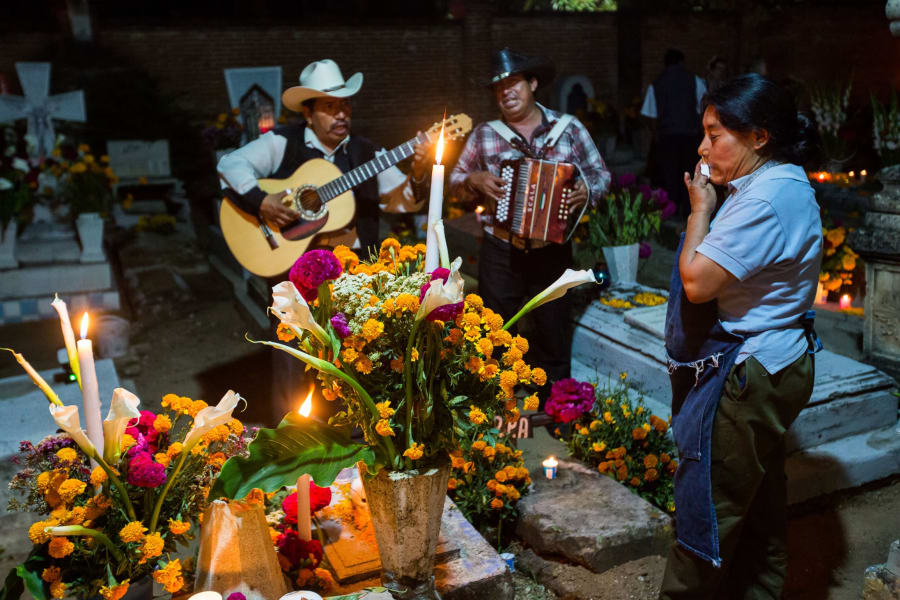

1 of 10
A Mexican woman wipes away a tear as a Mariachi band plays at the tomb of a loved one during the Dia de los Muertos, or Day of the Dead, festival in Oaxaca, Mexico, on Thursday, October 31. Celebrated in Mexico and around the world, the traditional holiday honors the lives of lost family members and friends. Richard Ellis/Getty Images
"People build altars to let their loved ones know they were missed, candles are lit to help guide them back to their home and some of their favorite items are set out to make them feel welcomed. I've made an altar in honor of my grandmother, setting out her favorite perfume," says Aurora Anaya-Cerda, owner of La Casa Azul bookstore. Richard Ellis/Getty Images
"Some choose to go to the grave site of the loved one instead of building an altar," says Mexican-American writer Kathy Cano-Murillo, owner of Crafty Chica in Phoenix, Arizona. "Family and friends bring candles which are turned off to symbolize the end of their journey to our world." Eduardo Verdugo/AP
Revelers dance through the streets in traditional costumes in Oaxaca on Wednesday, October 30. "The first day of Dia de los Muertos is dedicated to honoring the lives of children who have passed away and adults are celebrated the next day," says Cano-Murillo. Richard Ellis/Getty Images
"While children often dress in costumes and participate in parades for Halloween, it's completely independent of Day of the Dead," says Juan Carlos Aguirre, executive director of Mano a Mano, a New York-based nonprofit organization dedicated to celebrating Mexican culture and promoting the understanding of Mexican traditions through arts and culture. Richard Ellis/Getty Images
An elderly Zapotec indigenous woman carries flowers to the grave of a family member at the start of the Day of the Dead festival in Teotitlan, Mexico. "Marigold flowers are used for Day of the Dead because of their pungent smell. It's supposed to attract the spirits back on this one day they are allowed to return to visit family and friend," says Anaya-Cerda. Richard Ellis/Getty Images
"Over the years, skull face painting has become very popular. It symbolizes the acceptance of death, of the cycle of life," says Cano-Murillo. "When the spirits crossover, you are sending a message that you are celebrating it with them. You are not in fear of death." Richard Ellis/Getty Images
A paper mache costumed character walks through the streets of Oaxaca. "At first, children a bit scared of the costumes and skull painting because they don't know what it means," says Valentin Concha-Nunez, museum educator for El Museo del Barrio in New York. "But when I tell them to touch their craniums they realize that skulls are a part of them and then they embrace that aspect of it." Richard Ellis/Getty Images
An elderly woman hand makes traditional tamales for the Day of the Dead festival. "This is one of my favorite aspects of Dia de los Muertos because my father, who recently passed away, wasn't too keen on skulls. Making tamales, bread and other favorite foods that their loved ones would have enjoyed is an important aspect of this celebration," says Cano-Murillo, "Eventually, we are all going to take our turn so wouldn't it be nice if your family and friends took a day out to remember you." Richard Ellis/Getty Images
A baker adds sugar to loaves of pan de muerto at La Ideal bakery in Mexico City on Thursday, October 24. The pan de muerto, or bread of the dead, is a sweet soft bread shaped like a bun often decorated with bone-like pieces traditionally baked in Mexico during the weeks leading up to Dia de los Muertos. Susana Gonzalez/Bloomberg via Getty Images
